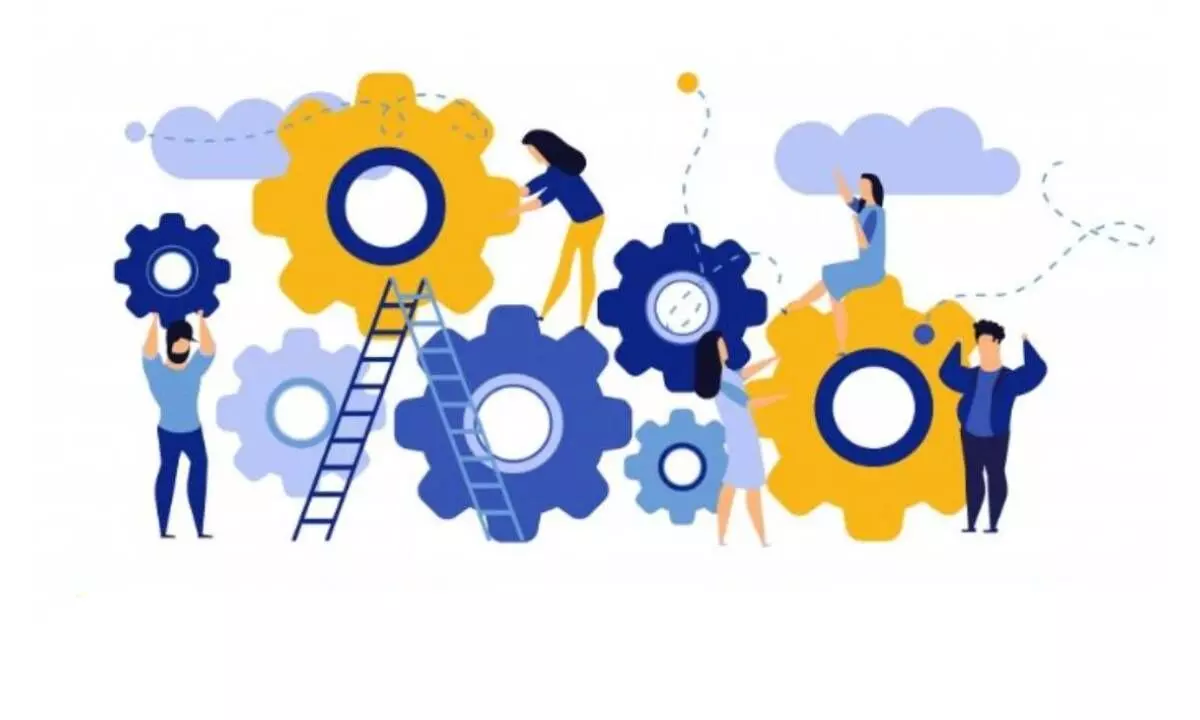G-20 Presidency provides ideal platform to devise pro-youth policies
Centre should prepare youth as ‘Development Professionals’ of SDGs
image for illustrative purpose

India economy is leading in terms of manpower, especially when it comes to the strength of youth. This implies that there are immense opportunities for harnessing the potential of the demographic dividend. The G-20 is the best bet to move up the ladder.
According to the 2023 World Population Review, India is home to 1.42 billion people while more than 50 per cent of its population is below the age of 25 and more than 66 per cent below the age of 35. Endowed with this advantage, Indian economy can reap the benefits like increase in economic growth with policies that focus on involvement of youth.
Prime Minister Narendra Modi, as the leader of G-20, can push forward many developmental issues that will benefit even developing economies given that the platform provides an opportunity to promote economic cooperation and trade between members and those closely working with G20 countries. In this context, it is pertinent to mention that the G20 Presidency can be leveraged for improving exports from India, employing more people outside and using Indian rupee in trade in many more countries. Youth should be given priority so that they will be gainfully employed in different sectors and prove their mettle.
After all, ‘One Earth, One Family and One Future’ is the main theme of G20 and some of the key priorities include inclusive, equitable, and sustainable growth; LiFE (lifestyle for the environment); women's empowerment, digital public infrastructure, and technology-enabled development in health; education, climate financing and circular economy.
Strategies for enhancing role of youth
With the introduction of LiFE movement, we can promote environmentally conscious practices and sustainable traditions by preparing youth as ‘earth leaders’ focusing on school children and college students, who can, in turn, work towards conservation of biodiversity and environment. Moreover, LiFE will leverage the strength of social networks to influence social norms surrounding climate, and protection of the environment. As a result, the next generation is well prepared to maintain ecological balance and greener environment. The second one is a comprehensive one wherein the youth will acquire skills and techniques and work towards filling the gap of skilled workforce required by the small and medium sized enterprises, the focus areas post-Covid. Of course, the flagship programme of the Union Government Deen Dayal Upadhyay Grameen Kaushalya Yojana is training youth all over the country, But we should prepare them for the global market and ensure that they will acquire the latest skills in key sectors like Artificial Intelligence, digital technologies, coding, skilled technicians and managers.
Preparing youth as ‘Development Professionals’ of SDGs and identifying them for appropriate positions to work at the level of gram panchayat, block panchayat and zilla panchayat in rural areas is the need of the hour. The skilled youngsters can lead to the achievement of 2030 Agenda for Sustainable Development as envisioned by the NITI Aayog.
Making agriculture and education as technology enabled development sectors for which the involvement of youth with four-year professional degrees, as emphasized in National Education Policy 2020, will be considered and trained for promoting digital public infrastructure and financial inclusion which is in progress already. The youth will become technology enablers and augment knowledge sharing in a continuous manner in both agriculture and education sectors thus pushing up the GDP.
In fact, the world has already recognized that India possesses abundant skilled and trained human resources that are contributing to an increase in GDP, per capita income and a sustained growth rate.
Finally, it would be pertinent to involve youth at various levels and in different sectors to ensure inclusive growth and development which will be women-led development leading to socio-economic development.
The way forward
As per ILO report, ‘Decent Work for Youth in India’ the Indian labour force is set to grow by over eight million per annum over the coming decade in which the majority will be youth. Therefore, the challenge is in designing policies and programmes that can create employment for youth.
The potential areas that can be considered for utilizing youth power include skill enhancement, employment creation and exploring global markets based on the demand.
India, being the President of G-20, can add momentum by organising meetings of youth in each state and discuss the six priorities of G-20 that will make them understand their role and their contribution to the economy. This can be achieved if the Union and state governments design appropriate programmes for enhancing education and entrepreneurship, imparting training and exposure to new avenues so that they will be motivated and committed to becoming partners in development. Towards this, the governments must invest significant amounts on programmes for youth across ministries and departments.
(The writer is founder of Kahaani)

